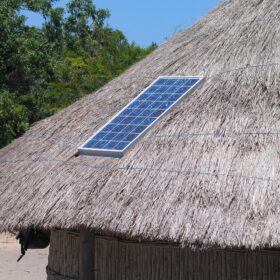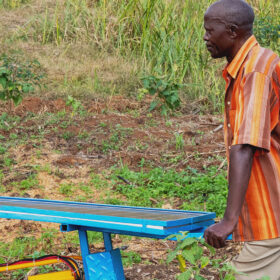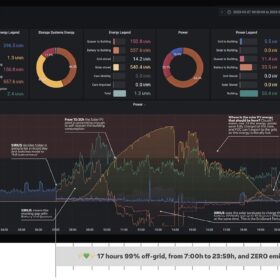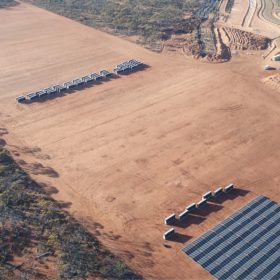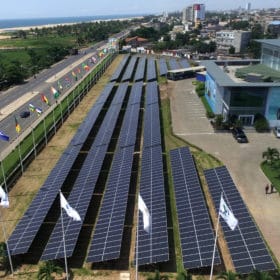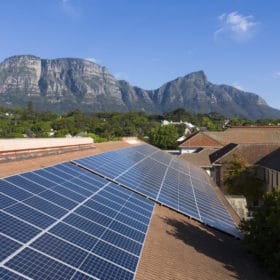Citroën lightweight compact EV equipped with solar kits
La Croisière Verte is the name of a 13,500 km expedition from the north to south of Africa in a fleet of four Citroën AMI vehicles, each carrying 5,600 W of lightweight PV panels in foldable packs.
Off-grid solar investment down by 43% in 2023
The Global Off-Grid Lighting Association (GOGLA) says total investment in the off-grid solar sector stood at $425 million in 2023, down 43% year on year. It says the industry needs to address a lack of early-stage financing to meet development and climate targets.
After-sale support key to boosting off-grid solar
A new survey from US-based impact measurement company 60 Decibels shows off-grid energy customers are currently facing a series of challenges such as product affordability, gender inequality, customer support, further investment in minigrids, and over-indebtedness. The report, however, reveals that most users say the quality of their lives “very much improved” thanks to off-grid PV.
Weekend Read: It’s time to get Sirius
In a bid to avoid costly grid augmentation, Spanish electric vehicle (EV) charger supplier Wallbox has designed a multi-layered energy intelligence solution – proving that necessity is the mother of invention.
Canadian company unveils portable off-grid solar, battery kit
SEI Logistics has developed a portable, folding solar panel kit with batteries. The system is designed to work in harsh, remote environments.
Off-grid solar for Himalayan food chains
Decentralized solar devices such as PV-powered portable irrigation pumps are technically viable solutions to meet the energy needs of food value chains across the high-altitude Hindu Kush Himalaya region, according to a new report by the International Renewable Energy Agency (IRENA).
Morningstar unveils DC/AC inverters for off-grid applications
US-based solar controller producer Morningstar has launched a new line of off-grid inverters, featuring six models ranging from 150 W to 2,500 W. Production and deliveries are scheduled to start this year.
Zenith plans Australia’s largest off-grid hybrid power plant for mining op
Liontown Resources is set to install what could be Australia’s largest off-grid renewable energy hybrid power station, at its AUD 545 million ($374.5 million) Kathleen Valley Lithium Project in Western Australia.
Solar LCOE may drop to $0.018/kWh in Africa by 2030, says IEA
The International Energy Agency’s latest “Africa Energy Outlook” report says grids will need to be expanded, along with natural gas exploitation, if everyone in Africa is to have access to electricity by 2030. On the solar front, the document predicts a levelized cost of energy of $0.018/kWh to $0.049/kWh by 2030 – cheaper than wind power or gas.
World Bank notes potential for 210,000 mini-grids this decade
The international development entity has already invested $1 billion in local, off-grid electricity networks over the last decade – and attracted a further $1.1 billion in matched funding – and has predicted mini-grids could supply electricity to 490 million people by 2030.

